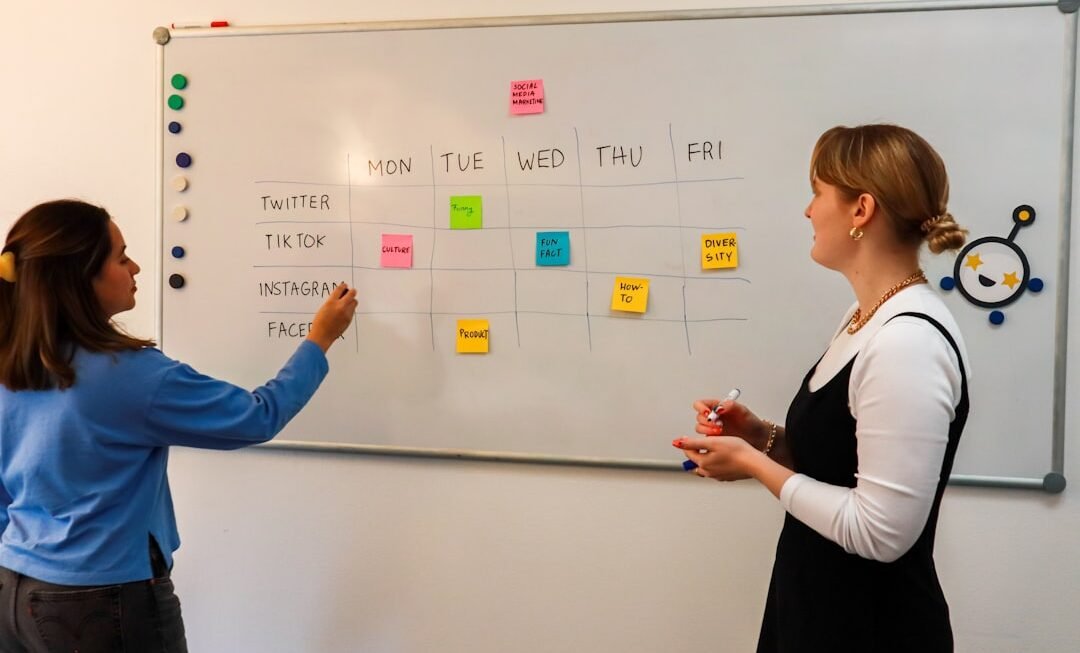In recent years, the Asia-Pacific region has witnessed a significant transformation in educational methodologies, with personalized learning emerging as a prominent trend. This shift is largely driven by the increasing recognition that traditional one-size-fits-all approaches to education often fail to meet the diverse needs of students. Personalized learning, which tailors educational experiences to individual learners’ strengths, weaknesses, and interests, has gained traction as educators and policymakers seek to enhance student engagement and improve learning outcomes.
Countries such as Singapore, Australia, and South Korea have been at the forefront of this movement, implementing innovative strategies that leverage technology to create more customized learning environments. The rise of personalized learning in Asia-Pacific can also be attributed to the growing emphasis on lifelong learning and skills development in response to rapid technological advancements and changing job markets. As economies in the region evolve, there is an increasing demand for a workforce equipped with critical thinking, creativity, and adaptability.
Personalized learning models are being adopted to cultivate these skills by allowing students to progress at their own pace, explore subjects that interest them deeply, and engage in project-based learning that mirrors real-world challenges. This approach not only fosters a love for learning but also prepares students for the complexities of the modern workforce.
The Role of AI in Personalized Learning
Artificial Intelligence (AI) plays a pivotal role in the evolution of personalized learning by providing tools and resources that can analyze vast amounts of data to tailor educational experiences. AI algorithms can assess individual student performance, learning styles, and preferences, enabling educators to design customized curricula that cater to each learner’s unique needs. For instance, platforms like Knewton and DreamBox Learning utilize AI to adapt content in real-time based on student interactions, ensuring that learners receive the right level of challenge and support as they progress through their studies.
Moreover, AI-driven analytics can help educators identify patterns in student behavior and performance, allowing for timely interventions when a student struggles or excels. This data-driven approach not only enhances the effectiveness of personalized learning but also empowers teachers to make informed decisions about instructional strategies. In Asia-Pacific, where educational systems are often under pressure to improve outcomes, the integration of AI into personalized learning frameworks offers a promising solution to address these challenges while fostering a more engaging and responsive educational environment.
Adaptive Technologies in Online Education
Adaptive technologies have become integral to online education, particularly in the context of personalized learning. These technologies utilize algorithms and data analytics to modify educational content and experiences based on individual learner profiles. For example, platforms like Coursera and edX employ adaptive learning technologies that assess a learner’s progress and adjust course materials accordingly.
This ensures that students are neither overwhelmed by difficult concepts nor bored by material that is too easy, striking a balance that promotes effective learning. In addition to content adaptation, these technologies often incorporate interactive elements such as quizzes, simulations, and gamified experiences that further enhance engagement. In Asia-Pacific, where internet penetration is high and mobile device usage is prevalent, adaptive technologies are particularly well-suited for reaching diverse student populations.
They allow learners from various backgrounds and locations to access high-quality educational resources tailored to their specific needs, thereby democratizing education and making it more inclusive.
Benefits of Personalized Learning for Students in Asia-Pacific
The benefits of personalized learning for students in the Asia-Pacific region are manifold. One of the most significant advantages is the increased engagement that comes from tailoring education to individual interests and abilities. When students have the opportunity to explore subjects that resonate with them personally, they are more likely to invest time and effort into their studies.
This heightened engagement can lead to improved academic performance and a deeper understanding of complex concepts. Furthermore, personalized learning fosters self-directed learning skills that are essential for success in today’s fast-paced world. By allowing students to take ownership of their educational journeys, personalized learning encourages them to set goals, monitor their progress, and seek out resources independently.
This autonomy not only builds confidence but also equips learners with critical skills such as problem-solving and time management. In a region where competition for academic success is fierce, these skills can provide students with a significant advantage as they transition into higher education or the workforce.
Challenges and Limitations of AI and Adaptive Technologies in Online Education
Despite the promising potential of AI and adaptive technologies in personalized learning, several challenges and limitations must be addressed. One major concern is the digital divide that persists in many parts of Asia-Pacific. While urban areas may enjoy robust internet connectivity and access to advanced technologies, rural regions often lag behind.
This disparity can exacerbate existing inequalities in educational opportunities, leaving some students without access to the personalized learning experiences that their peers enjoy. Additionally, there are concerns regarding data privacy and security when utilizing AI-driven platforms. The collection and analysis of student data raise ethical questions about consent and the potential misuse of information.
Educators and institutions must navigate these complexities carefully to ensure that they protect student privacy while still leveraging data to enhance learning experiences. Furthermore, there is a risk that over-reliance on technology could diminish the role of human interaction in education, which is crucial for developing social skills and emotional intelligence.
Implementation of Personalized Learning in Asia-Pacific
Country-Specific Initiatives
In Singapore, the Ministry of Education has taken a proactive approach to promoting personalized learning through initiatives such as the “Learn for Life” framework. This framework encourages schools to adopt flexible teaching methods that cater to individual student needs, leading to the integration of technology in classrooms. As a result, teachers can utilize data analytics tools to inform their instructional practices.
Embracing Personalized Learning in Australia
In Australia, personalized learning is being implemented at both the primary and secondary levels. The Australian Curriculum’s emphasis on differentiated instruction has led to the adoption of blended learning models that combine face-to-face teaching with online resources tailored to individual learners.
Key to Successful Implementation
However, the successful implementation of personalized learning requires ongoing professional development for teachers. This is essential to equip them with the skills necessary to effectively leverage technology in their classrooms and provide high-quality, personalized education to their students.
Future Trends and Developments in Personalized Learning
As personalized learning continues to evolve in Asia-Pacific, several trends are likely to shape its future landscape. One notable trend is the increasing integration of virtual reality (VR) and augmented reality (AR) technologies into personalized learning experiences. These immersive technologies have the potential to create engaging environments where students can explore complex concepts through interactive simulations.
For example, VR can transport learners into historical events or scientific phenomena, providing experiential learning opportunities that traditional methods cannot replicate. Another emerging trend is the rise of competency-based education (CBE), which focuses on students demonstrating mastery of specific skills rather than adhering strictly to age-based grade levels. CBE aligns well with personalized learning principles by allowing students to progress at their own pace based on their proficiency rather than time spent in class.
As educational institutions in Asia-Pacific increasingly adopt CBE frameworks, we can expect a shift towards more individualized pathways that prioritize skill acquisition over traditional metrics of success.
The Impact of Personalized Learning on Education in Asia-Pacific
The impact of personalized learning on education in Asia-Pacific is profound and multifaceted. By prioritizing individual learner needs, this approach has the potential to transform not only academic outcomes but also the overall educational experience for students across the region. As personalized learning becomes more prevalent, we may see a shift away from rote memorization towards critical thinking and problem-solving skills that are essential for success in an increasingly complex world.
Moreover, personalized learning fosters inclusivity by accommodating diverse learning styles and abilities. Students who may have previously struggled within traditional educational frameworks can thrive when given the opportunity to learn at their own pace and explore subjects that ignite their passions. This inclusivity not only benefits individual learners but also contributes to a more equitable society by ensuring that all students have access to quality education tailored to their unique needs.
In conclusion, as personalized learning continues to gain momentum across Asia-Pacific, it holds the promise of reshaping educational landscapes for generations to come. By harnessing technology and innovative pedagogical approaches, educators can create dynamic learning environments that empower students to take charge of their education while preparing them for the challenges of tomorrow’s world.












